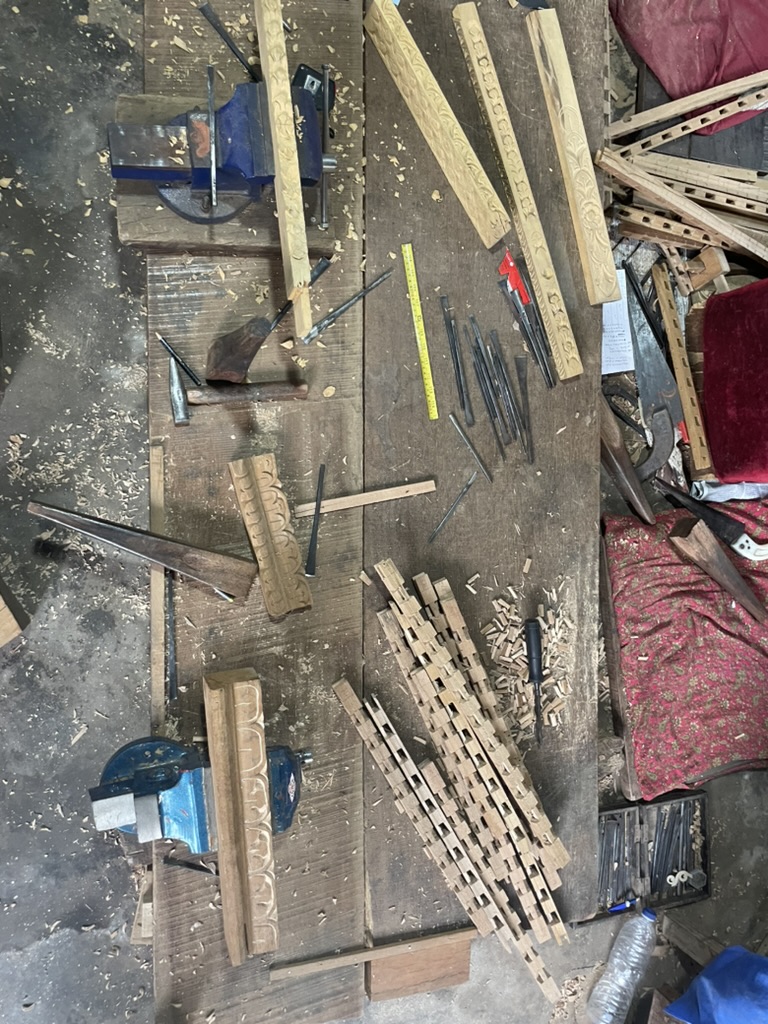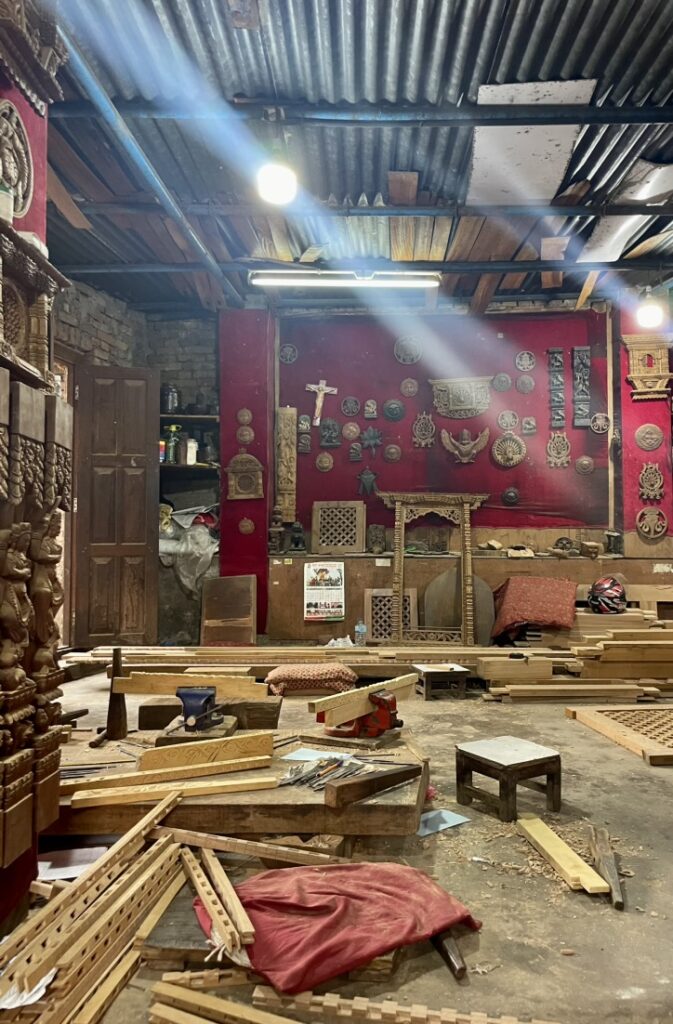I studied abroad in Kathmandu, Nepal in the spring of 2024. During the second half of the semester, I, and the seven other students in my cohort, had the opportunity to develop our Nepali language skills through classes at community arts workshops. These local workshops were dedicated to a number of crafts and fine arts including paper making, wood carving, pottery, and basket weaving. I chose to learn about the process of wood carving because I was fascinated by the delicate techniques required to imbed intricate designs into solid wood.
On the day of the first class, I boarded a bus with two other students and travelled to a small family-run workshop in central Bhaktapur – a city in the eastern corner of Kathmandu valley. The studio was tucked away on a side street beneath apartments and filled with a vast quantity of wood carvings. There were tall doors covered in criss-crossing designs, small statues to the perfect likeness of gods and goddesses, and long columns wrapped in perfectly repeated patterns. The carvings ranged from freshly lacquered artworks to slabs of wood with roughly sketched designs not yet brought to fruition. I watched the artisans gracefully lay tool to material, beginning to fully appreciate wood carving as a dedicated practice that takes a lifetime to master.
Wood carving was foundational to the family’s identity– although not all pursued wood carving as a daily profession, all had the capability to pass down the tradition to younger generations. When we arrived, many of the older family members were absorbed by the process of carving intricate motifs into panels of wood. The daughter and son, who were around our own ages, led the carving class. While we sketched and carved, we began to chat, exchanging stories and questions. I was acutely grateful for their willingness to engage with our developing language skills, even in moments of slight awkwardness or unsurety.
Throughout the first session, we practiced drawing a fundamental floral design on paper– this knowledge of and ability to reproduce patterns is the basis of the craft. Building on this work in the second session, we applied the design onto wood and began to carve its small, leaf-like, shapes. It was a daunting task that required an absolute precision I did not possess. My movements were inconsistent, and rather graceless. This translated to shapes of slightly different heights and widths on our wood. During the subsequent sessions, I watched the hands of the master carvers and attempted to mimic the astonishing flow of their tools. It was after the first class that I took the photo Woodcraft, hoping to capture the striking creative energy I felt in that space.

